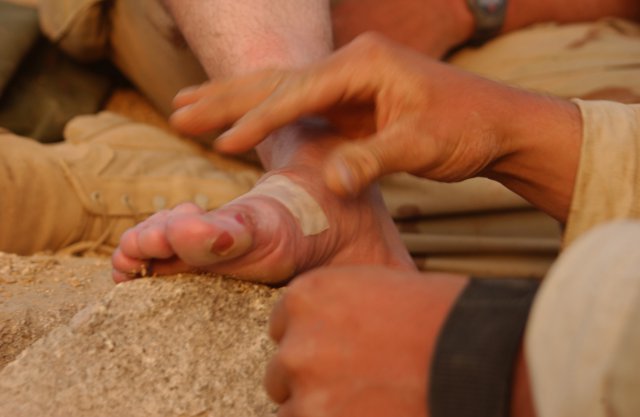Foot complications are quite common in people with diabetes.
It is estimated that 10% of people with diabetes will have a diabetic foot ulcer at some point in their lives.
The cost of diabetic foot care to the NHS in England only is estimated at £1 Billion a year. Even more important, is the human cost of the diabetic foot.
Diabetes is the most common cause of non-traumatic limb amputation, with diabetic foot ulcers present in more than 80% of amputations in people with diabetes. It is estimated that a person with diabetes is 23 times more likely to have an amputation, than someone without diabetes. Mortality rates, after developing diabetic foot ulcers and amputations, are high, with around 50% of people dying within 5 years of developing a diabetic foot ulcer, and up to 70% of people dying within 5 years of having an amputation. Previous diabetic foot ulcers and amputations are an indicator of comorbidity and a risk factor for further foot disease. After the first amputation, people with diabetes are twice as likely to have a subsequent amputation, compared with those without diabetes.
Prevention and early intervention are vital. NaDIA (National Diabetes Inpatients Audit) showed that the quicker a person with a diabetic foot ulcer is seen, the quicker and better is the outcome.
There are 3 main kinds of diabetic foot ulcer: neuropathic, ischaemic and the most common one, which is neuroischaemic. It is important to be able to identify the person at risk of diabetic foot ulcer on admission, in order to ensure correct foot protection. This is when the Touch the Toes test plays an important role.

The instrument is designed to assess the presence of neuropathy and/or ischaemia, in order to identify any active foot ulcer or active foot disease. It is mandatory to assess the feet of a person with diabetes, within the first 24 hours of admission.
The first check is visual: a neuropathic diabetic foot will usually be warm and pink with dry skin, patches of thick skin and heavy callus formation. Other signs are loss of pain, temperature, proprioception, tactile sensation and deformity. An ischaemic diabetic foot will usually be cold, discoloured (commonly red) and with diffuse callus, possible gangrene, and a characteristic complaint of claudication or nocturnal rest pain. It is important to note that complaints of pain may not be present in cases where neuropathy is present alongside ischemia. Any active ulcer or necrosis/gangrene should be referred immediately to the podiatric team. It is also important to look for signs of abscesses or skin infections.
The healthcare professional should assess for the presence of reduced sensation (a sign of neuropathy). This is performed after obtaining informed consent to touch the person’s feet, by asking the patient to close their eyes, and tell which foot you are touching, if the left or the right. It is useful to try the touch in an area that is unlikely to be affected by neuropathy, (usually the forearm) prior to the test, so the person will know the kind of sensation to expect. Gently touch every spot indicated on the assessment chart for 2 seconds, alternating between feet in a random pattern. If 2 or more “touch points” are missed then the person is considered at risk and need foot protection and daily foot checks.
Patient with neuropathy should not walk barefoot or with non-slippery socks, and should wear appropriate protective footwear (slippers or shoes). These should have closed toes and a good fit, and should be checked for the presence of foreign objects.
The final assessment is of the pedal pulses; the professional should be checking the posterior tibial and the dorsalis pedis. The pulses should be strong and regular; if they are not palpable, the medical team should be informed and further vascular assessments performed.
Other high risks factors include a previous history of foot ulcers and amputations. People at risk should be referred to the podiatry service. Patient with active ulceration should be reviewed within 24 hours of referral, and referred even if they are known to the community team. Inpatients at high risk should have daily foot checks and their feet protected whilst in and out of bed.
Remember, time is tissue and the correct foot CPR (Check, Protect, and Refer) could prevent harm and serious complications to your patients!
Erika Nelli for Italian Nurses Society
References:
- Making Hospital Safer for People with Diabetes conference – Foot Problems CPD accredited discussion;
- Diabetes UK;
- Ipswich Touch the Toes test;
- NADIA 2017;
- NFDA (National Diabetes Foot Care Audit) Full Summary Patient Report 2014-2017;
Professor Richard Leigh lesson on 16/01/2019 DISN project.

